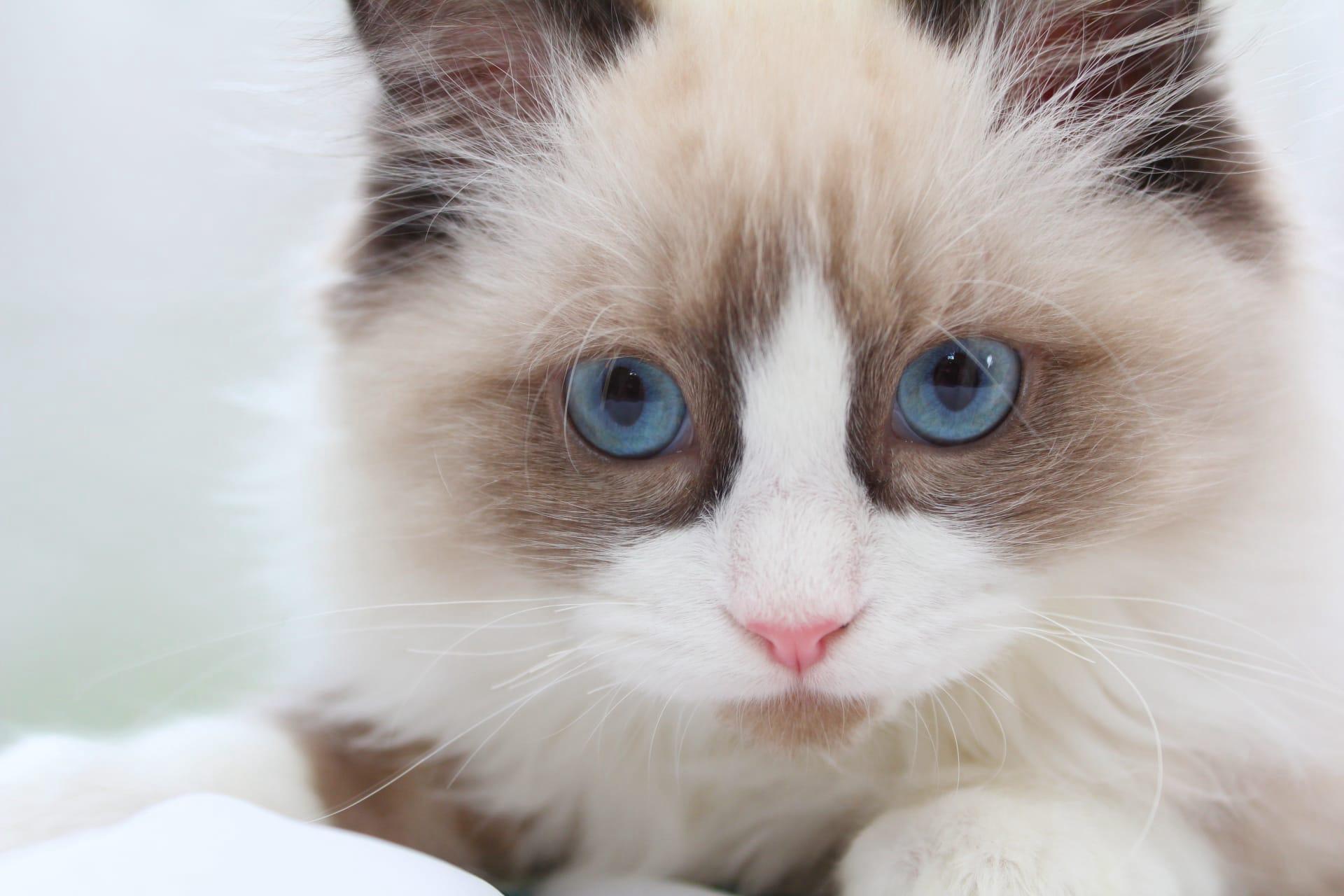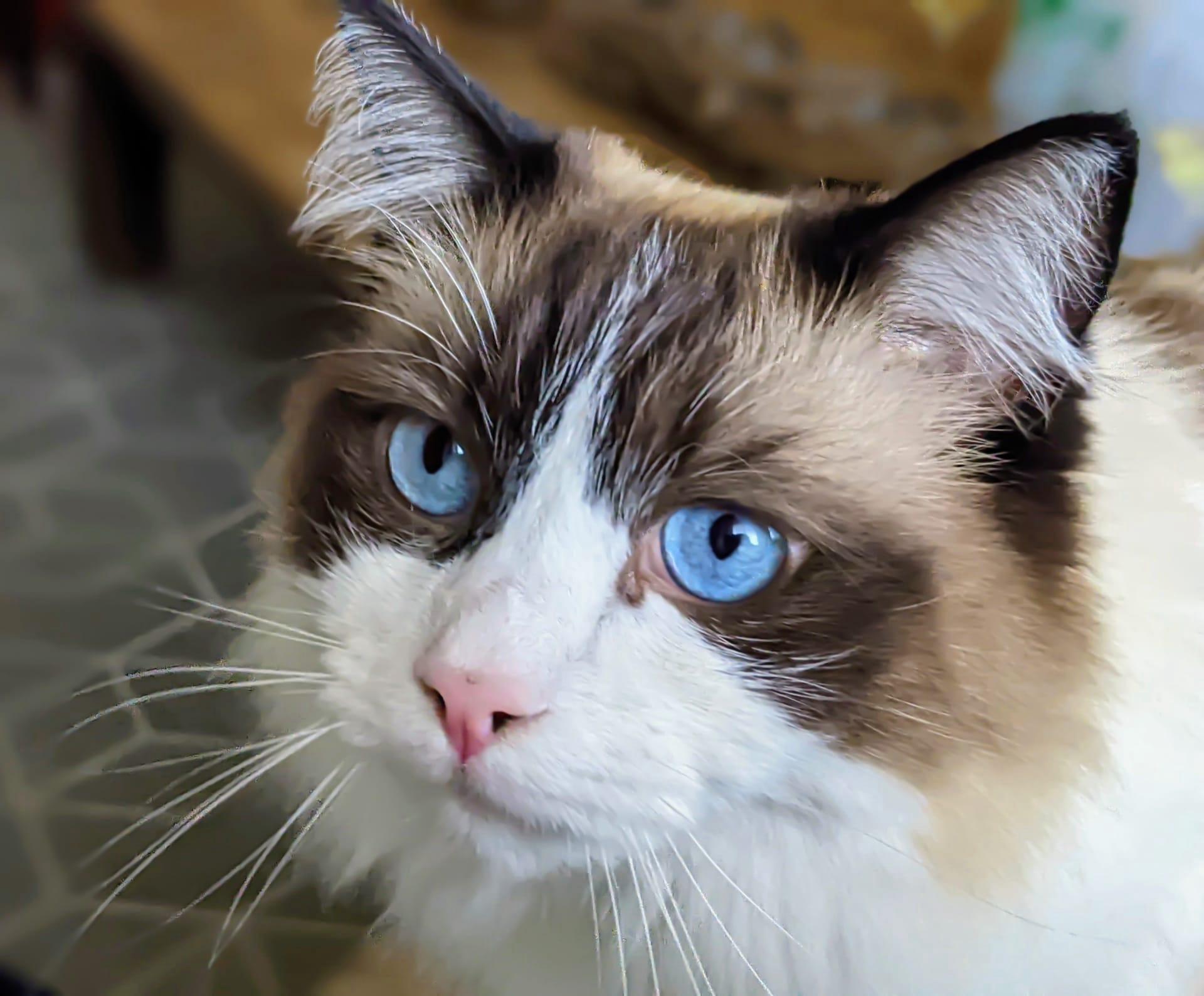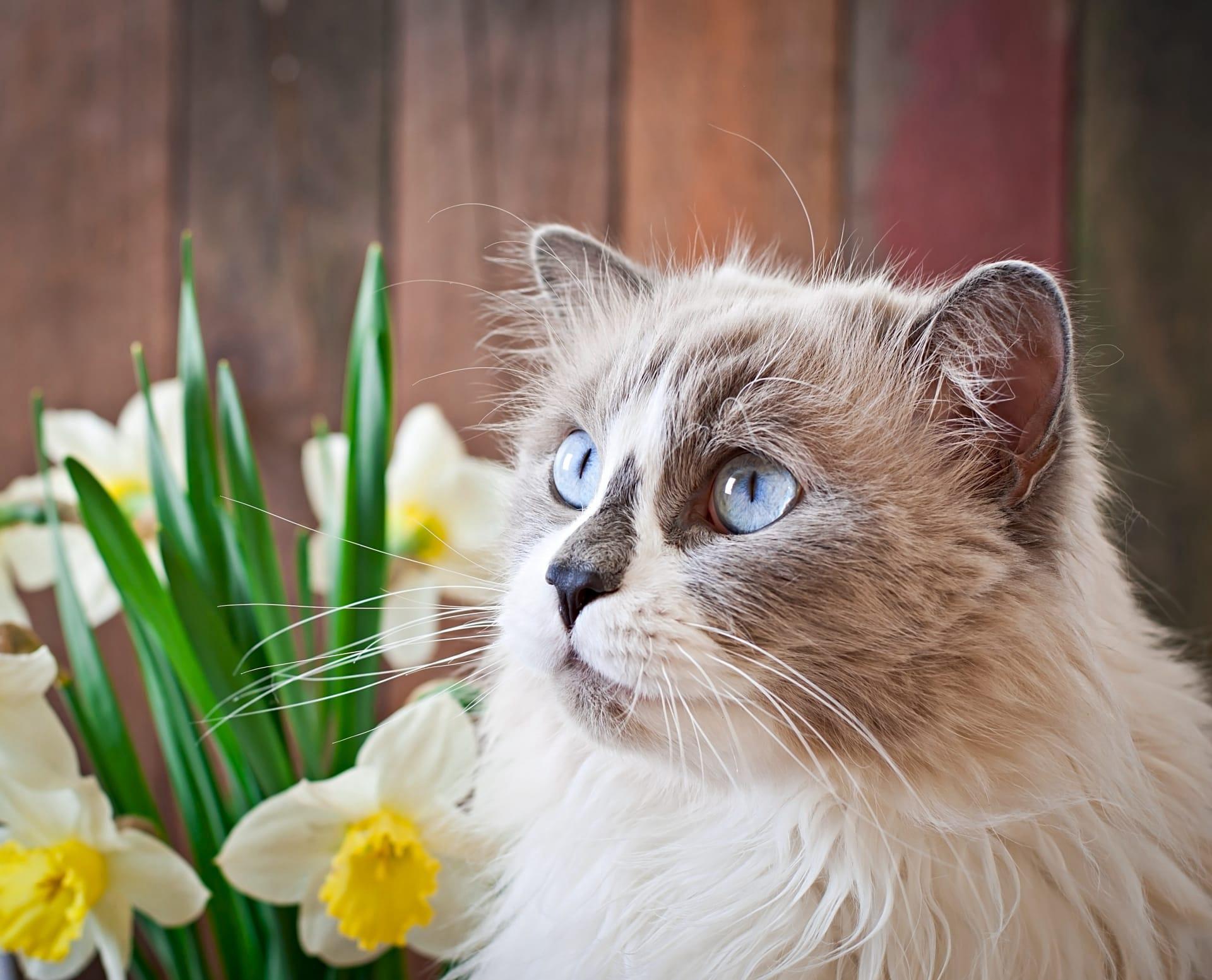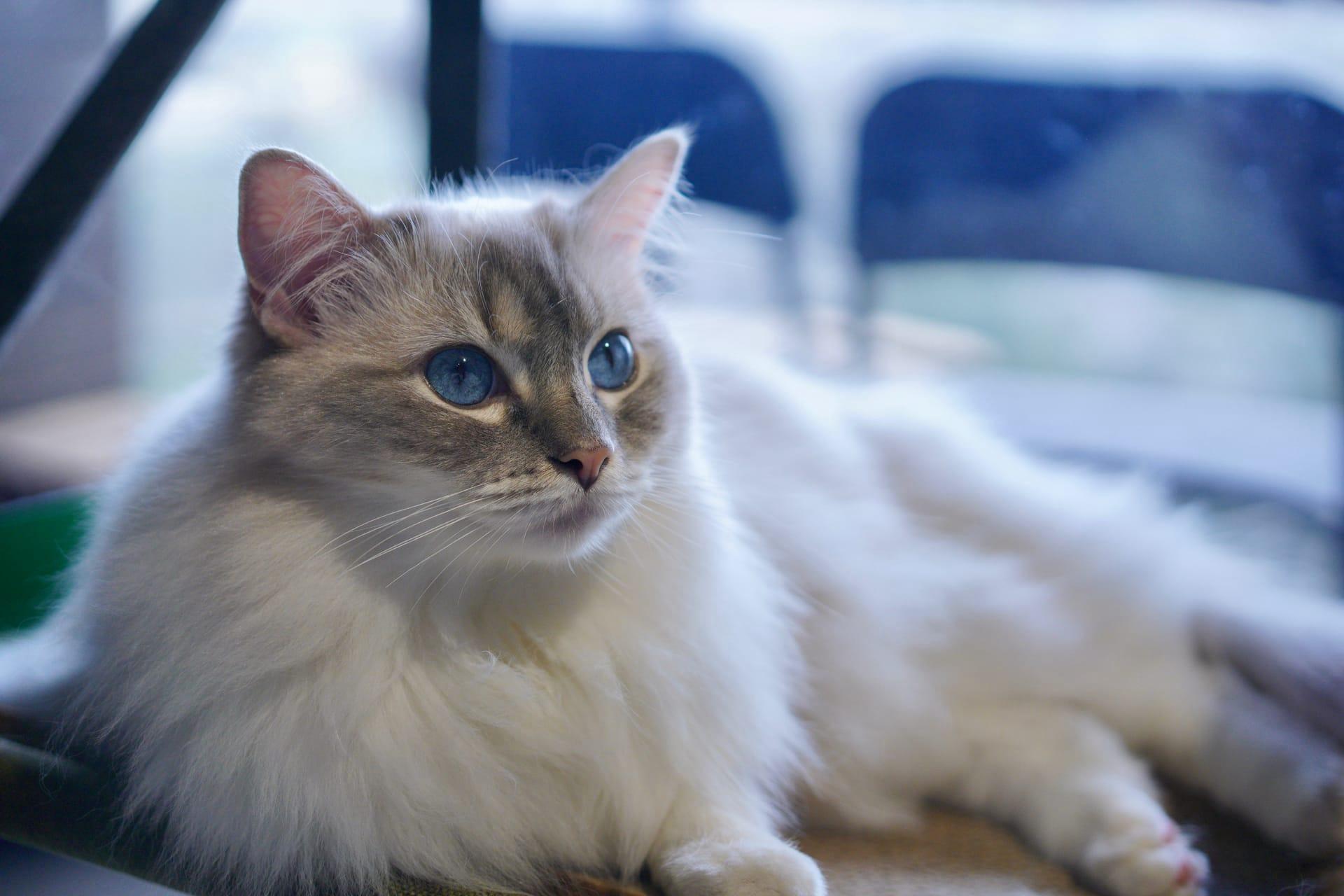Ragdoll Cat Characteristics
- Home /
- Mini Encyclopedia /
- Animal /
- Ragdoll Cat Characteristics
1
Ragdoll Cats, known for their striking blue eyes and semi-long silky coats, are a marvel of feline beauty and gentleness. These cats boast a large, muscular frame, with males typically weighing between 15 to 20 pounds (6.8 to 9.1 kilograms), while females are slightly smaller, usually weighing between 10 to 15 pounds (4.5 to 6.8 kilograms). Their fur, while plush and dense, does not mat easily due to its texture. Ragdolls are known for their longevity, with a life expectancy ranging from 12 to 15 years, though some have been known to live well into their twenties with proper care.
The most distinctive organ of a Ragdoll Cat is undoubtedly its striking blue eyes. The depth of color in their eyes is not just for show; it plays a crucial role in their communication and emotional expression. These captivating eyes are not just a window to their soul but also a means through which Ragdolls express affection and curiosity. The intensity of the blue can vary from light to dark, depending on genetics, but it always remains a central feature of their charming appearance.

2
Question: Why do Ragdoll Cats go limp when picked up?
Answer: Ragdoll Cats are renowned for their docile and placid temperament, which is vividly demonstrated when they are picked up or held. This unique characteristic, where they go completely limp, much like a rag doll, hence their name, is attributed to their relaxed and trusting nature. It's not a sign of health issues but rather an indication of their supreme comfort and trust in humans. This behavior stems from their genetic disposition and is reinforced by positive human interactions from a young age.

3
Ragdoll Cats are not known for their athleticism but rather for their laid-back and calm demeanor. They are playful in a gentle manner, enjoying simple games that do not require high levels of energy expenditure. Despite their large size, they are not typically high jumpers and prefer activities that keep them closer to the ground. Their movement is graceful and deliberate, reflecting their overall serene disposition.
When it comes to eating, Ragdoll Cats have a tendency towards being less finicky than some other breeds, showing a preference for both dry and wet food. They require a balanced diet rich in proteins to maintain their muscle mass and overall health. Portion control is crucial for Ragdolls to prevent obesity, especially since they are less active. Feeding them high-quality cat food twice a day is generally recommended, alongside ensuring they have access to fresh water at all times.

4
Ragdoll Cats thrive in indoor environments, where their calm and affectionate nature can be fully appreciated. They adapt well to living in apartments and houses alike, as long as they have ample space to roam and explore safely. Their social nature means they prefer environments where they are not left alone for long periods. Providing them with toys and interaction is key to keeping them happy and engaged.
Ragdoll Cats reach sexual maturity at around 12 to 16 months of age. They are known for their mothering instincts, with females being particularly attentive to their kittens. Litters typically consist of four to six kittens, which are born white and develop their color patterns as they grow. Responsible breeding practices are essential to ensure the health and well-being of Ragdoll cats, with a focus on genetic health, temperament, and maintaining the breed's distinctive characteristics.

5
Book: "The Complete Guide to Ragdoll Cats" provides an all-encompassing look into the world of Ragdoll Cats, detailing everything from their history and personality to care and health tips. Authored by a renowned feline expert in the United States in the early 21st century, this book serves as an essential resource for both prospective and current Ragdoll cat owners, offering insights into creating the best environment for these gentle giants.
Book: "Ragdoll Cats: A Comprehensive Owner's Guide" is another invaluable resource, focusing on the specific needs and characteristics of the Ragdoll breed. Published in the late 20th century by a British cat enthusiast and breeder, this book delves into the breed's development, ideal care practices, and how to foster a nurturing relationship with these affectionate cats. It provides readers with practical advice on feeding, grooming, health care, and understanding the unique temperament of Ragdoll Cats.